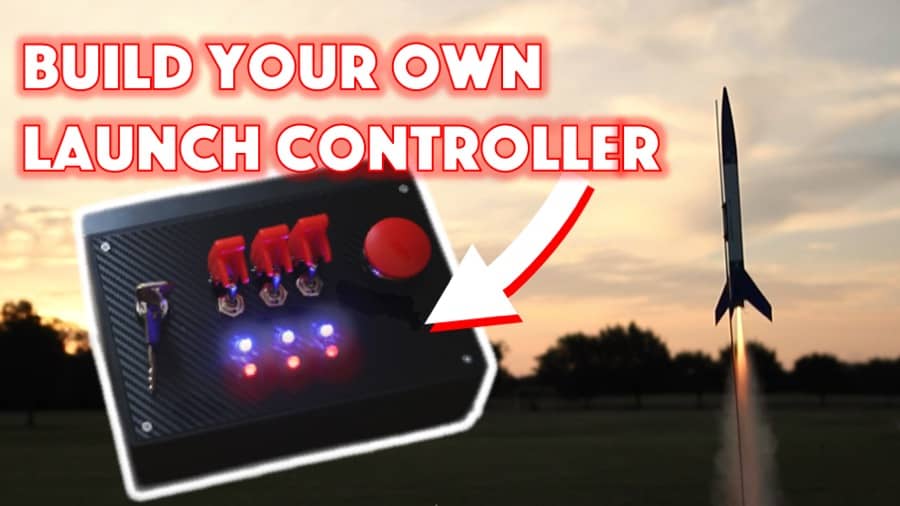
I can’t tell you how many times I’ve finished building a model rocket and have been ready for launch, only to have my plans ruined by the weather. Sudden downpours or blustering winds have repeatedly gotten in my way.
I’ve more than once wondered can you launch a model rocket in the wind? According to the National Association of Rocketry and the National Fire Protection Association, you should not launch a model rocket if the wind speeds are greater than 20 miles per hour. Many long time model rocket hobbyist prefer not to risk a launch in winds greater than 10 miles per hour.
Everyone would agree, the best day for a model rocket launch is a sunny day with clear blue skies, but if you’ve got the itch to launch your freshly built rocket, you’re probably wondering what a little wind could do. In this article, I will take you through the reasons for avoiding a windy launch and some steps you can take to help if you decide to launch on a windy day.
Are you still using the standard Estes controllers for your launches?
We just built our own beautiful launch controllers that make launches SO much more fun, and we documented EVERY single step and item purchased and put it into a step-by-step course that teaches you how to do the exact same thing.
Click here to learn more about how you can build your own launch controllers!

How Wind Affects Model Rockets
The NAR and the NFPA aren’t being over cautious when they prohibit flying a model rocket in winds higher than 20 miles per hour. A model rocket that is launched in high winds runs the risk of being blown away or of weather cocking.
Weather cocking is when aerodynamic forces cause the model rocket to become horizontal and fly into the wind. It is caused by the same aerodynamic force that makes a weathervane tell us what direction the wind is blowing.
When a model rocket does this, it could fly from the launch site and you could lose it, or it could damage nearby property or harm a bystander.
Additionally, when you launch a model rocket in windy conditions, you will not get the same quality experience that you would get on a less windy day. The rocket will not reach the same speeds or the same altitude that it would on a windless day.
In short, the wind makes the rocket’s flight and its descent unpredictable. You would be risking your rocket in order to launch it in unideal conditions.Why risk it for a subpar experience? The flight of your model rocket would be disappointing and a waste of a motor in the best case and catastrophic at the worst.
Best Model Rockets for Windy Days
Even if you are looking at 15 mile per hour winds on your planned launch day, you will want to carefully select the best model rocket and the best motor to ensure that the launch goes as close to plan as possible.
Finding a good rocket to launch on the windier days is kind of like Goldilocks finding the right porridge. Here’s what you should look for when selecting a rocket for a windy day.
Weight
For a windy day, a model rocket should not be too heavy, and it should not be too light. The rocket’s weight plays a big part in how the wind impacts its flight. If the rocket does not have enough mass, it will not stay on its path when the wind hits it. It will be blown away from the wind.
The wind would have to be very strong and the model rocket would have to be very light for this to be a major issue.
If the rocket it too heavy, it will not leave the launch rod at high enough speeds to counteract the speed of the wind. The speed at which the rocket leaves the launch pad is critical on windy days.
Thickness and Bulk
If the rocket is too bulky or too thick, the wind will have more of an influence on the model rocket. This is because a bulkier rocket will have more surface area for the wind to slam into. The more surface area, the more the rocket will be pulled off course.
A slimmer rocket with a thin, sleek barrel will fly better in the wind because it does not offer as much surface area to the wind.
If you’re having trouble understanding how this works, imagine the sail on a
ship. When the sail is open wide, the wind catches it and causes the ship to
move. When the sail is folded up it has no effect on the ship.
Similarly, if your rocket is wide, the wind with catch it, and if it is slim it will be much less affected.
Choose a rocket with a slim barrel because a slimmer rocket will be less affected by the wind.
Engine Selection
Selecting the right motor for your model rocket is just as important as selecting the rocket itself. For a windy day, you will want to select a model rocket motor with a high average thrust.
The faster the rocket flies, the less the wind will affect its flight. Use the highest average thrust approved for your specific rocket.
You can find the average thrust listed on the motor. It is the number sitting right next to the letter. For example, an A8-3 motor has an average thrust of 8.
The higher an average thrust, the faster a model rocket will launch and the more likely it will be to overcome the force of the wind.
Best Launch System for Windy Days
Choosing the right launch system really makes a big difference when you’re launching on a windy day. It will help your launch go smoothly by guiding the rocket until it reaches a high enough speed that it will be able to overcome the wind.
According to the NAR, “Best practice would indicate that rockets should be guided by launch rods, rails, or towers until they have attained a forward velocity of at least 4 times the velocity at which the wind is blowing (or gusting) at the launch site.”
What this means is that your rocket should be moving with greater velocity than the wind before it leaves the launch rod if you want a successful launch. Velocity is speed with direction. So, to put it more simply, you want your rocket to be traveling at a high speed when it leaves the launch rod.
To help combat the effects of the wind, you may want to use a more rigid and longer launch rod. You can increase the diameter of the launch rod to ¼ inch or larger and use a length of 4-6 feet to help give your rocket a fighting chance against the wind.
Alternatively, you could build a rail launcher. A rail launcher is typically used for high powered rocket launches, but they can be used with any rocket. The rocket must have rail guides installed to work with the rail launcher.
This launch method is not a spur of the moment decision, but if you’re looking to become more involved in model rocket constructing and launching, you may want to build one any way.
Best Recovery System for a Windy Day
One of the hazards of flying a model rocket on a windy day is that it will be carried too far away on the wind to be easily retrieved. If your launch site isn’t big enough, it may even land some place where you cannot retrieve it.
Since you put so much time and effort in crafting your model rocket, you do not want to lose it. On a windy day in particular, you need to limit the amount of drifting that occurs. Drifting is when a model rocket is carried away by the force of the wind on its parachute or other recovery device.
To limit the amount of drifting your model rocket does after the recovery system activates, there are a number of things you can do.
- Use a streamer instead of a parachute. A streamer will cause the rocket to fall to the ground more quickly, decreasing the amount of time it will drift.
- Use a smaller parachute. A smaller parachute will not catch as much wind as a larger one, and it will drift less.
- Prevent the parachute from fully opening. You can do this by taping the top of the parachute together. On a less windy day, you can remove the tape.
- Cut a hole in the parachute. If you don’t have access to a streamer, you can cut a small hole in the parachute to help speed up the descent. This is obviously a permanent solution and not one frequently employed.
Even if you take one of the measures listed above to prevent drift, you may want to select a large launch site with a lot of visibility to keep from losing track of the rocket.
How to Measure the Wind at Your Launch Site
The simplest way to figure out if it is too windy to fly a model rocket is to check with your local weather. If the wind is close to 20 miles per hour then it is better to wait for another day to launch the rocket you poured your blood, sweat, and tears into.
Many model rocket fliers like to record the exact speed at the launch site as wind speed can vary depending on different elements of the location. You measure the exact speed of your launch site by purchasing an anemometer.
An anemometer is a simple tool that measures the speed of the wind. You might like to track the wind speed at your launch location anyway so that you can analyze the data later if a launch goes in an unexpected direction. Anemometers typically cost between $15 and $45, and there is no need for anything too fancy.
Use a Simulator to Predict the Launch
If you’re worried about how your rocket might respond in windy conditions, you can use a simulator to predict what will happen without having to do any complicated math. Model rocket simulators are one of the best modern tools to improve your model rocketry skills.
The two most common rocket simulators are:
OpenRocket is an open source rocket simulator that is free. It has a large database of motor data that you can use to predict your launch.
RockSim isn’t free, but it does offer a 30 day free trial if you want to see if it is for you. It also features helpful tutorial videos to get you started with the program. It costs about $120.
Learning to use these programs will greatly increase the likelihood that you will have a successful launch.
Build Your Own Launch Controller
Don’t forget! You can ditch the stock controllers and confidently build your own from scratch using our step-by-step instructions and exact materials list! We promise this will make your launch experience 10x better, and using our course License to Launch you can be 100% confident you’ll be able to finish this project and be super proud of what you’ve built! Here’s a sneak peek below.
